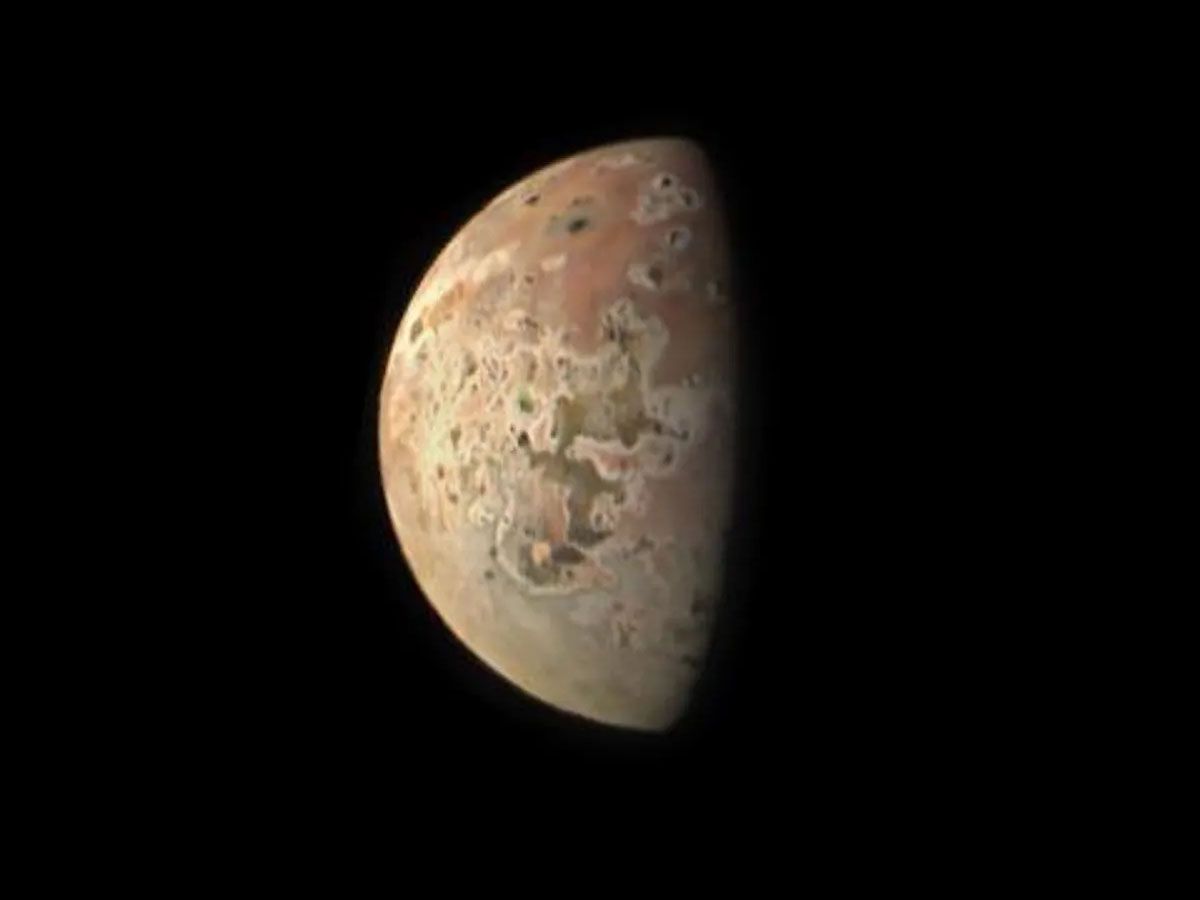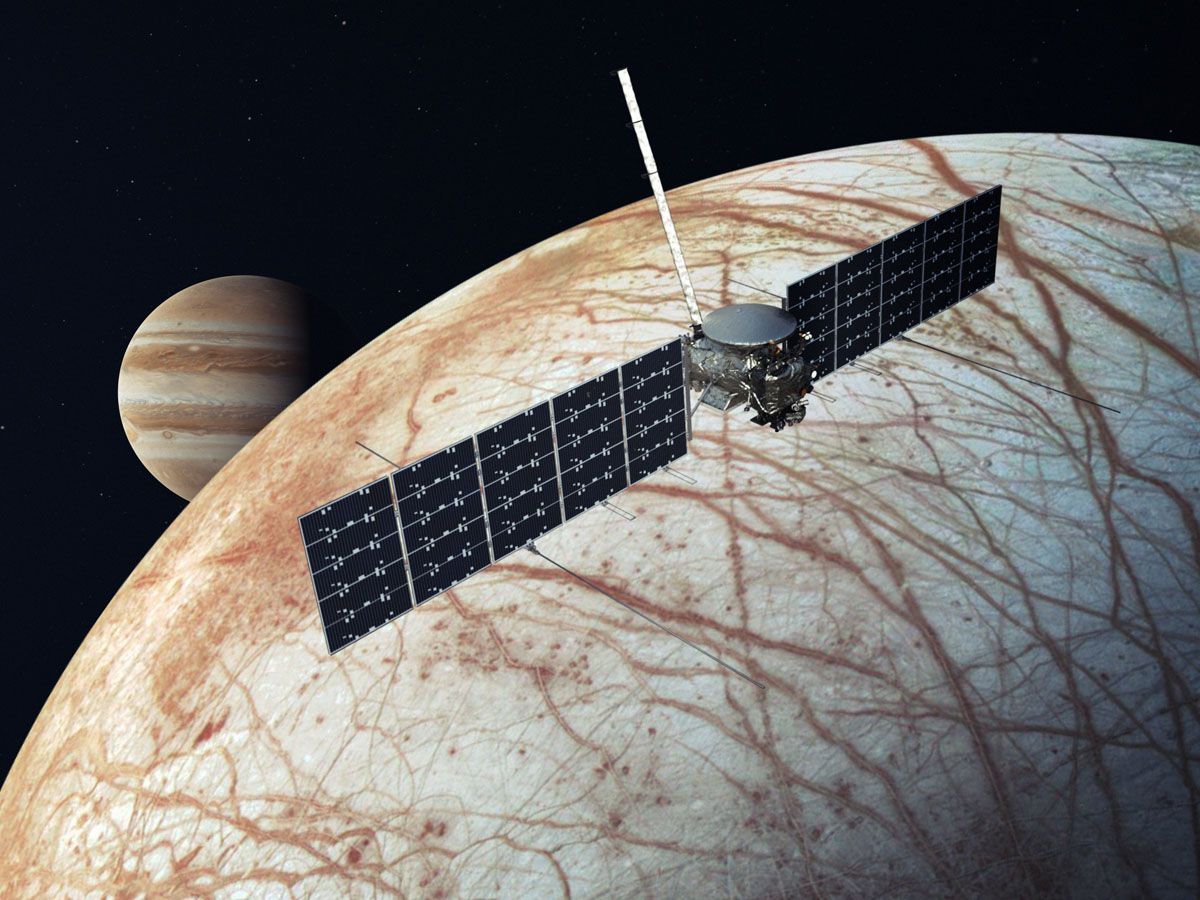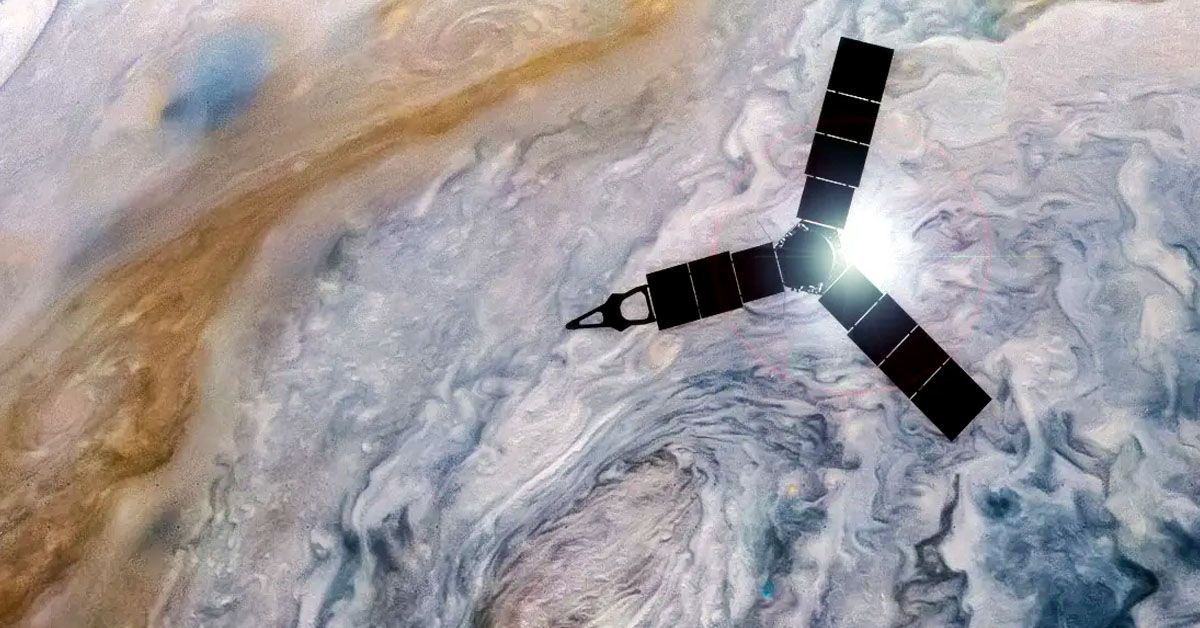The Juno spacecraft, an emissary of human curiosity and innovation, has ventured into territories that, until recently, were simply a distant, sparkling blur in our Earth-bound telescopes. In a daring celestial ballet, it sailed near the tumultuous moon Io, beaming back stunning photographs that have sent waves of excitement rippling through the scientific community.
Juno's History and Mission
Stepping back to 2016, we find Juno, NASA's emissary, embarking on a daring journey toward the colossal gas giant, Jupiter. This robotic explorer sailed through interplanetary space, fired up with ambition as boundless as the cosmos it was destined to explore. Arriving in Jupiter's orbit, Juno began its seminal mission: peeling back the layers of cosmic mystery that shroud the largest planet in our solar system.
However, Juno's journey didn't stop with its initial task. The spacecraft has since embarked on an extended mission, collecting a trove of significant data. This data is not mere numbers and figures, but a woven tapestry of knowledge that shapes our understanding of Jupiter and its sprawling constellation of moons.
Juno's Encounter with Io
One moon that piqued our interest was Io, a world of tumult and tumultuous beauty. Juno made its closest approach to Io in a thrilling event, darting a mere 22,060 miles away from the moon's tempestuous surface. This daring maneuver wasn't a mere scientific achievement but akin to a seasoned sailor navigating the stormy seas, fraught with peril but brimming with discovery.
Oh hello, Io! During its 51st close flyby of Jupiter on May 16, our #JunoMission captured these views of Jupiter's volcanic moon Io.
— NASA Solar System (@NASASolarSystem) May 18, 2023
More about Juno's exploration of Io: https://t.co/QhqQNP8Cgy
Other recent images: https://t.co/Ql7aCQvRqY
📸 processed by Kevin M. Gill pic.twitter.com/QS4eWfzIi3
The scientific team, an ensemble of dedicated astronomers and engineers, watched with bated breath as Juno braved Jupiter's harsh radiation environment. They witnessed Juno navigate a space thick with high-energy particles, where even the most robust spacecraft could falter. Yet, Juno sailed through, carrying on its mission and reinforcing our belief in human ingenuity.
The Splendors of Io
In the retinue of Jupiter's moons, Io stands as one of the four illustrious Galilean moons, a cosmic quartet of celestial wonder. The strong gravitational influence and potent radiation from Jupiter endow Io with unique attributes, setting it apart from its lunar siblings.

At the heart of Io's distinction is its volcanic nature, a fiery testament to the incessant tug-of-war of gravitational forces between Jupiter and the other Galilean moons. This competition molds Io into a celestial forge, where the moon's interior heat escapes through numerous active volcanoes.
Stunning Visuals from Juno
To bring us closer to Io's dynamic surface, NASA recently released a suite of captivating images captured by Juno. These snapshots reveal a terrain cracked and textured, a testament to the constant stretch and squeeze Io experiences due to its neighboring moons' gravitational influence.

One standout visual piece is a collage of images that chronicle Juno's journey as it approached Io, sailed closest, and receded. Each image stands as a frame in a cosmic film, narrating an epic tale of exploration and discovery.
Volcanism and Influence of Io
In the grand theater of the cosmos, Io owns the title of the most volcanic celestial body in the solar system. This tumultuous trait not only carves Io's own surface but also holds potential sway over its lunar companions.

A curious byproduct of Io's intense volcanism is the rich sulfur emissions. This extraterrestrial effluence forms a colorful veneer over Io, painting its surface with hues of red and yellow. Intriguingly, the sulfur spray might reach Europa, another moon of Jupiter, adding yet another layer of complexity to its potential habitability.
Upcoming Missions and Future Flybys
Beyond these revelations, the Odyssey continues. Future flybys are set to take Juno even closer to Io. In December 2023 and February 2024, "twin flyby encounters" will stage Juno at thrilling proximities to the moon.
Meanwhile, another spacecraft, the Europa Clipper, is set to launch next year. Its mission? To explore Europa, another potentially habitable moon of Jupiter, offering another piece in the grand puzzle of celestial life.

In Juno's latest close encounter with Io, a fresh batch of pictures has come to light. These are not just the closest pictures of the volcanic moon, but also a vivid testament to the prowess of NASA's Galileo mission. One image, processed by NASA JPL software engineer Kevin M. Gill, is particularly arresting, capturing both Io and Jupiter with a crescent of Io elegantly lining the left side.
As we look forward, Juno's journey is far from over. Its extended mission is slated to continue until September 2025. As part of this ongoing quest, Juno is set to perform more flybys of Io, bringing us even closer views of this fiery world. Remarkably, Juno has been orbiting Jupiter for over 2,500 Earth days, an impressive testament to our relentless pursuit of cosmic knowledge. As we look ahead, Juno's journey continues to inspire and remind us of our enduring quest to unravel the cosmos' grand tapestry.
Sources: inverse.com / iflscience.com / mashable.com












